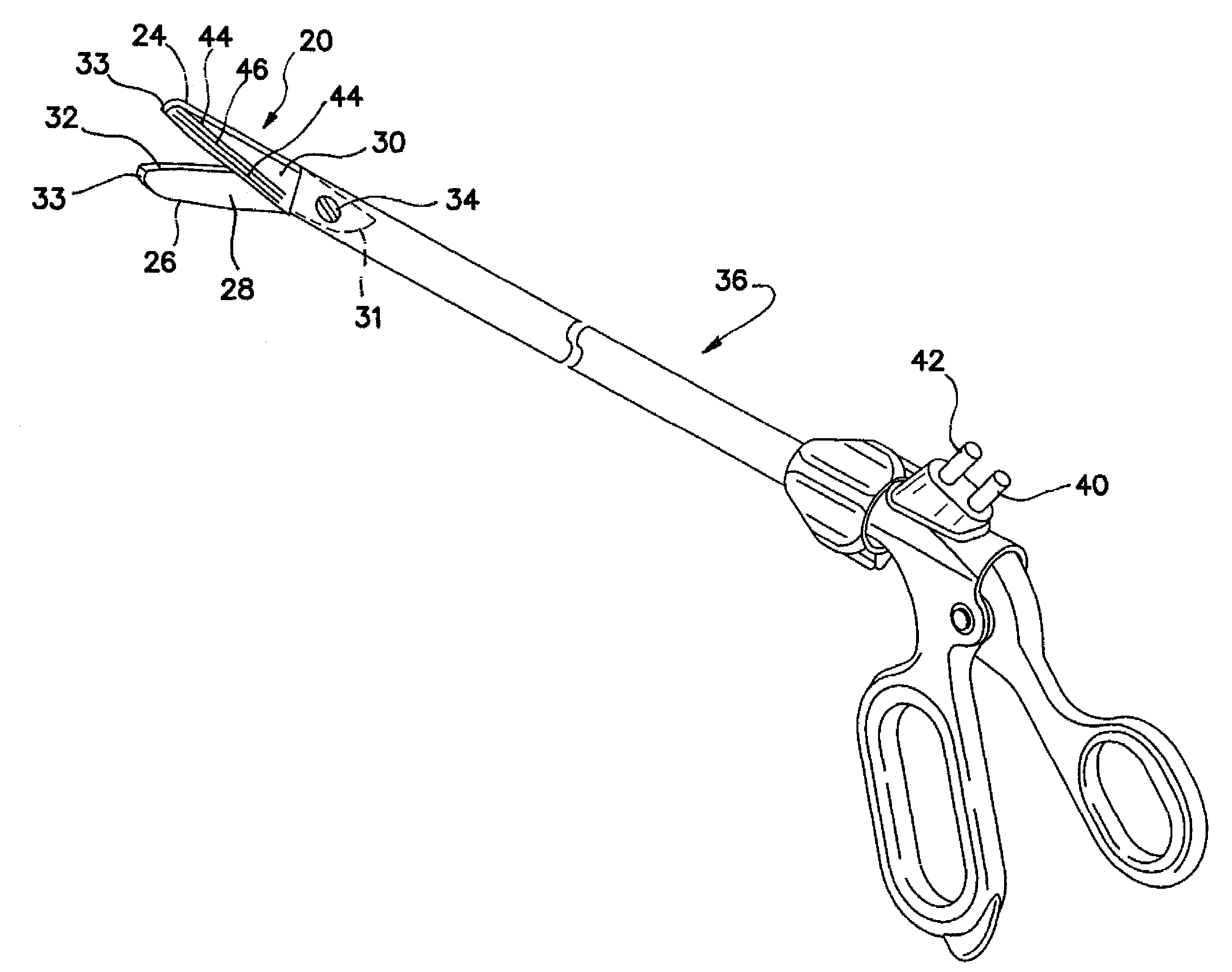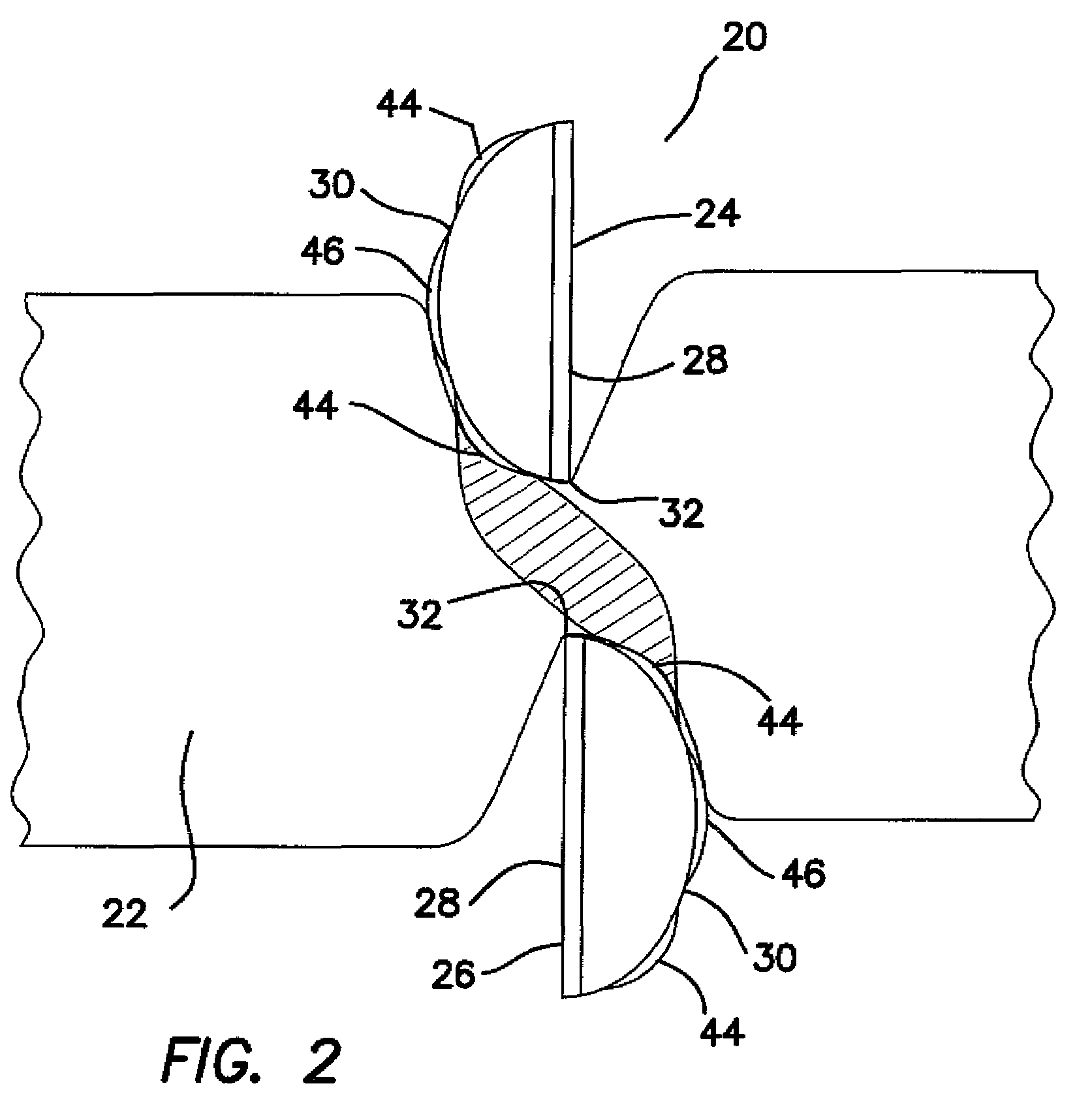Bipolar electrosurgical scissors
a scissors and bipolar technology, applied in the field of minimally invasive surgery, can solve the problems of coagulation that stops bleeding, monopolar electrosurgical instruments have some drawbacks, and patients are thermally injured
- Summary
- Abstract
- Description
- Claims
- Application Information
AI Technical Summary
Benefits of technology
Problems solved by technology
Method used
Image
Examples
Embodiment Construction
[0038]The invention and its various embodiments can now be better understood with the following detailed description wherein illustrated embodiments are described. It is to be expressly understood that the illustrated embodiments are set forth as examples and not by way of limitations on the invention.
[0039]Referring to FIGS. 1-2, the invention includes bipolar electrosurgical scissors 20 for use in treating biological tissue 22. The scissors 20 include a first scissor blade 24 and a second scissor blade 26. Each of the first and second blades 24, 26 includes a shearing surface 28, an opposed surface 30 positioned opposite the shearing surface, a cutting edge 32, a first, proximal end 31, and a second, distal end 33. A pivot pin 34 pivotally couples the first blade 24 to the second blade 26 at a position proximal the shearing surfaces 28 of the first and second blades. The shearing surfaces 28 of the first and second blades 24, 26 face each other and interface with each other. As de...
PUM
 Login to View More
Login to View More Abstract
Description
Claims
Application Information
 Login to View More
Login to View More - R&D
- Intellectual Property
- Life Sciences
- Materials
- Tech Scout
- Unparalleled Data Quality
- Higher Quality Content
- 60% Fewer Hallucinations
Browse by: Latest US Patents, China's latest patents, Technical Efficacy Thesaurus, Application Domain, Technology Topic, Popular Technical Reports.
© 2025 PatSnap. All rights reserved.Legal|Privacy policy|Modern Slavery Act Transparency Statement|Sitemap|About US| Contact US: help@patsnap.com



